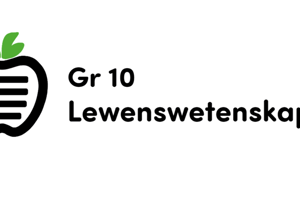Podcast
Questions and Answers
Which of the following is a direct way humans reduce biodiversity?
Which of the following is a direct way humans reduce biodiversity?
- Overharvesting of plant species (correct)
- Introduction of non-native competing species
- Habitat fragmentation due to road construction
- Increased edge habitat creation
What was a significant contributing factor to the extinction of the Dodo bird?
What was a significant contributing factor to the extinction of the Dodo bird?
- Increased pollution and altered climate conditions
- The introduction of animals that competed with it for food resources (correct)
- Natural over predation from other bird species
- Habitat loss due to volcanic activity
How does habitat fragmentation affect the movement of species?
How does habitat fragmentation affect the movement of species?
- It has no impact on the movement of species
- It creates barriers to the normal movement of species for purposes such as feeding, mating, and migrating (correct)
- It allows more ease of movement as a species population grows
- It encourages migration to new habitats
What is the primary effect of habitat fragmentation on a population?
What is the primary effect of habitat fragmentation on a population?
Which of the following species require large undisturbed tracts of land?
Which of the following species require large undisturbed tracts of land?
What happens to the amount of edge habitat when a large tract of land is fragmented?
What happens to the amount of edge habitat when a large tract of land is fragmented?
What are species called when they are introduced by humans to a non-native area?
What are species called when they are introduced by humans to a non-native area?
What is a characteristic of edge habitat?
What is a characteristic of edge habitat?
How do ships contribute to the spread of exotic species?
How do ships contribute to the spread of exotic species?
What impact does the increase of edge habitat have on forest interiors?
What impact does the increase of edge habitat have on forest interiors?
Why might an exotic species thrive in a new environment?
Why might an exotic species thrive in a new environment?
What is a consequence of the zebra mussel introduction in the Great Lakes?
What is a consequence of the zebra mussel introduction in the Great Lakes?
Other than overexploitation and direct removal, what is a way in which humans affect biodiversity?
Other than overexploitation and direct removal, what is a way in which humans affect biodiversity?
What is a typical outcome of genetic isolation in a fragmented population?
What is a typical outcome of genetic isolation in a fragmented population?
What tends to happen when an exotic species establishes itself successfully in a non-native environment?
What tends to happen when an exotic species establishes itself successfully in a non-native environment?
What is a natural barrier that has been overcome by human activity, according to the provided text?
What is a natural barrier that has been overcome by human activity, according to the provided text?
Flashcards
Overexploitation
Overexploitation
The process of reducing biodiversity by directly removing species from their habitats, often through hunting, fishing, or harvesting.
Habitat Fragmentation
Habitat Fragmentation
The loss of large, continuous areas of habitat due to human activities like road construction, housing development, and industrialization.
Edge Habitat
Edge Habitat
The boundary between two different types of habitat, often with unique plant and animal communities.
Nonnative Species
Nonnative Species
Signup and view all the flashcards
Movement
Movement
Signup and view all the flashcards
Biodiversity Reduction
Biodiversity Reduction
Signup and view all the flashcards
Habitat Modification
Habitat Modification
Signup and view all the flashcards
Ecological Disturbance
Ecological Disturbance
Signup and view all the flashcards
Exotic Species
Exotic Species
Signup and view all the flashcards
Genetic Drift
Genetic Drift
Signup and view all the flashcards
Gene Flow
Gene Flow
Signup and view all the flashcards
Native Species
Native Species
Signup and view all the flashcards
Exotic Species Success
Exotic Species Success
Signup and view all the flashcards
Invasive Species
Invasive Species
Signup and view all the flashcards
Exotic Species Establishment
Exotic Species Establishment
Signup and view all the flashcards
Study Notes
Human Activity and Biodiversity Loss
- Human activities significantly alter biodiversity.
- Direct removal (overexploitation): Humans directly remove species, like overhunting the Dodo bird.
- Indirect impacts: Human activities alter animal and plant habitats.
- Habitat modification/fragmentation: Creating smaller, isolated habitat patches leads to negative biodiversity impacts.
- Introduction of non-native species (exotic species): Introduction of species to new environments can cause significant issues.
Habitat Fragmentation Impacts
- Reduces contiguous habitat, impacting species movement (feeding, mating, migration).
- Creates more edge habitat: This changes the overall species composition (e.g., increase in raccoons, skunks).
- Divides populations, reducing gene flow and increasing genetic isolation, leading to a loss of genetic variation.
Introduction of Exotic Species
- Exotic species (non-native) are transported across geographical barriers by humans.
- Accidental introduction: Ballast water in ships can transport species to new environments (e.g., zebra mussel).
- Lack of natural predators/controls in new environment: Invasive species can thrive and outcompete native species.
- Zebra mussels in the Great Lakes: A strong example of negative impacts of exotic species. Depletes resources, clogs infrastructure.
- Successful established exotic species often outcompete native species who lack natural defenses.
Studying That Suits You
Use AI to generate personalized quizzes and flashcards to suit your learning preferences.




